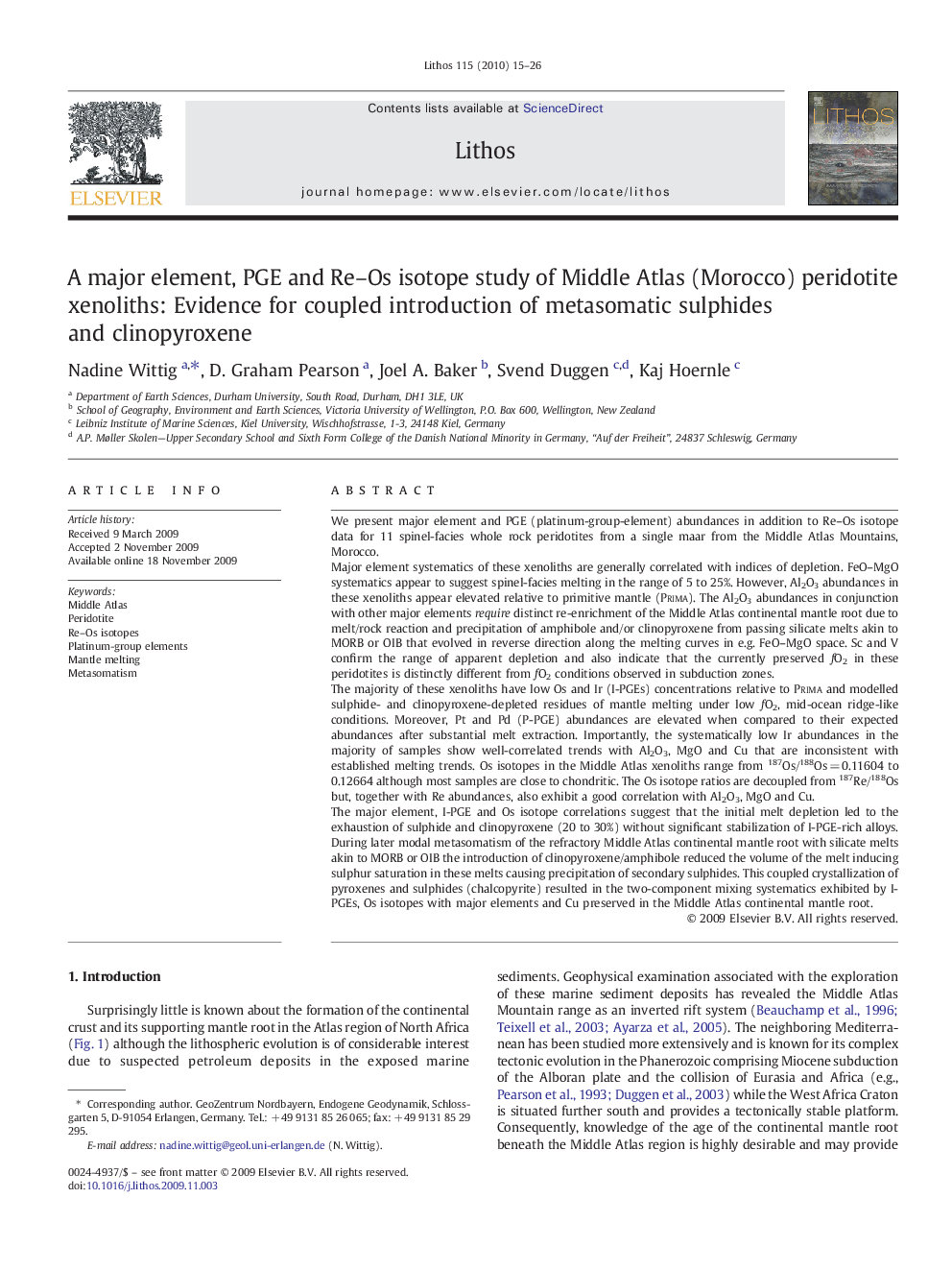| کد مقاله | کد نشریه | سال انتشار | مقاله انگلیسی | نسخه تمام متن |
|---|---|---|---|---|
| 4717027 | 1638735 | 2010 | 12 صفحه PDF | دانلود رایگان |

We present major element and PGE (platinum-group-element) abundances in addition to Re–Os isotope data for 11 spinel-facies whole rock peridotites from a single maar from the Middle Atlas Mountains, Morocco.Major element systematics of these xenoliths are generally correlated with indices of depletion. FeO–MgO systematics appear to suggest spinel-facies melting in the range of 5 to 25%. However, Al2O3 abundances in these xenoliths appear elevated relative to primitive mantle (Prima). The Al2O3 abundances in conjunction with other major elements require distinct re-enrichment of the Middle Atlas continental mantle root due to melt/rock reaction and precipitation of amphibole and/or clinopyroxene from passing silicate melts akin to MORB or OIB that evolved in reverse direction along the melting curves in e.g. FeO–MgO space. Sc and V confirm the range of apparent depletion and also indicate that the currently preserved fO2 in these peridotites is distinctly different from fO2 conditions observed in subduction zones.The majority of these xenoliths have low Os and Ir (I-PGEs) concentrations relative to Prima and modelled sulphide- and clinopyroxene-depleted residues of mantle melting under low fO2, mid-ocean ridge-like conditions. Moreover, Pt and Pd (P-PGE) abundances are elevated when compared to their expected abundances after substantial melt extraction. Importantly, the systematically low Ir abundances in the majority of samples show well-correlated trends with Al2O3, MgO and Cu that are inconsistent with established melting trends. Os isotopes in the Middle Atlas xenoliths range from 187Os/188Os = 0.11604 to 0.12664 although most samples are close to chondritic. The Os isotope ratios are decoupled from 187Re/188Os but, together with Re abundances, also exhibit a good correlation with Al2O3, MgO and Cu.The major element, I-PGE and Os isotope correlations suggest that the initial melt depletion led to the exhaustion of sulphide and clinopyroxene (20 to 30%) without significant stabilization of I-PGE-rich alloys. During later modal metasomatism of the refractory Middle Atlas continental mantle root with silicate melts akin to MORB or OIB the introduction of clinopyroxene/amphibole reduced the volume of the melt inducing sulphur saturation in these melts causing precipitation of secondary sulphides. This coupled crystallization of pyroxenes and sulphides (chalcopyrite) resulted in the two-component mixing systematics exhibited by I-PGEs, Os isotopes with major elements and Cu preserved in the Middle Atlas continental mantle root.
Journal: Lithos - Volume 115, Issues 1–4, March 2010, Pages 15–26